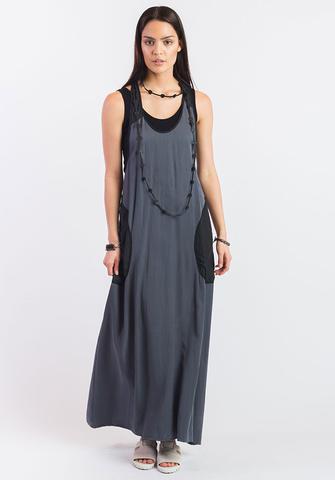Cupro, Tencel, Lyocell, Modal, Viscose, Rayon fabrics, what are they made of?
•Posted on September 28 2016


We get asked many times about our fabrics as we don't use synthetics but use fabrics that have names people are not familiar with. So we thought it best to do a blog post explaining the group of Regenerated Cellulose fibres which are known as Cupro, Tencel, Modal, Lyocell, Viscose and Rayon.
These are all Man Made fabrics but NOT Synthetics. Synthetics are made from Petroleum which is basically plastic and wearing them is like wrapping yourself in plastic!

The Man Made or Regenerated Cellulose fibres are plant based fabrics but are chemically produced to create a smooth silky fabric. They all have slightly different processes and some have better eco-credentials than others. They start with a Cellulose base; either wood pulp, cotton linter (a cotton waste product used in Cupro), Bamboo, Flax, Hemp, in fact any plant could be a base.

Tencel, Cupro, Modal and Lyocell are produced in a 'closed loop' which means the chemicals used can be extracted after and the water reused. They have a lower environmental impact and the best choice.
Viscose and Rayon do not have the same 'closed loop' production. I try to use mostly Tencel and Cupro in our garments but there are a couple of Viscose fabrics we have used over the years that wash and wear so well and I have not been able to find an alternative option that performs as well, but I am always on the look out.

All the Regenerated Cellulose fabrics drape nicely, have properties like a heavy silk but are 'Vegan friendly', and are nice to wear as they absorb moisture. They can all be hand washed or gentle machine washed but the odd thing is when wet they are not soft and drapey, in fact they become 'wood like', stiff and stay this way till they dry. I don't iron my garments as I don't iron anything, and if your garment has been pre-washed by us before you purchase it, this simple laundering process has been already done.
If you have any questions about any of our fabrics or garments, email us, we are always happy to help.
Cheers,
Sarah
Comments
2 Comments
-

Posted by Anonymous | March 13, 2020
-

Posted by Marlys Svensson | March 13, 2020
Leave a CommentHi Marlys,
There is a huge quality difference in fabrics especially Rayons. Some cost more than silks etc, especially the ones made in South Korea where they specialise in high quality Viscose, rayons etc.
Then there are the cheap versions which fast fashion use, which wash up like a rag and develop holes after a short time. So it’s all about the quality.
I wash all my clothes on a gentle cycle in a front loader washing machine, using a low spin cycle (600 rpm) which leaves lots more water in the garment. The higher the spin speed, the more crinkles. Maybe that may help?
Cheers
Sarah
Thank you for the clear explanation. I’ve been wondering about these names. I would like to know why some “rayons” wrinkle badly and others are nearly wrinkle proof. It is disappointing to buy something and find you have to iron it after a careful wash and hang dry, and even ironing won’t get the wrinkles out.